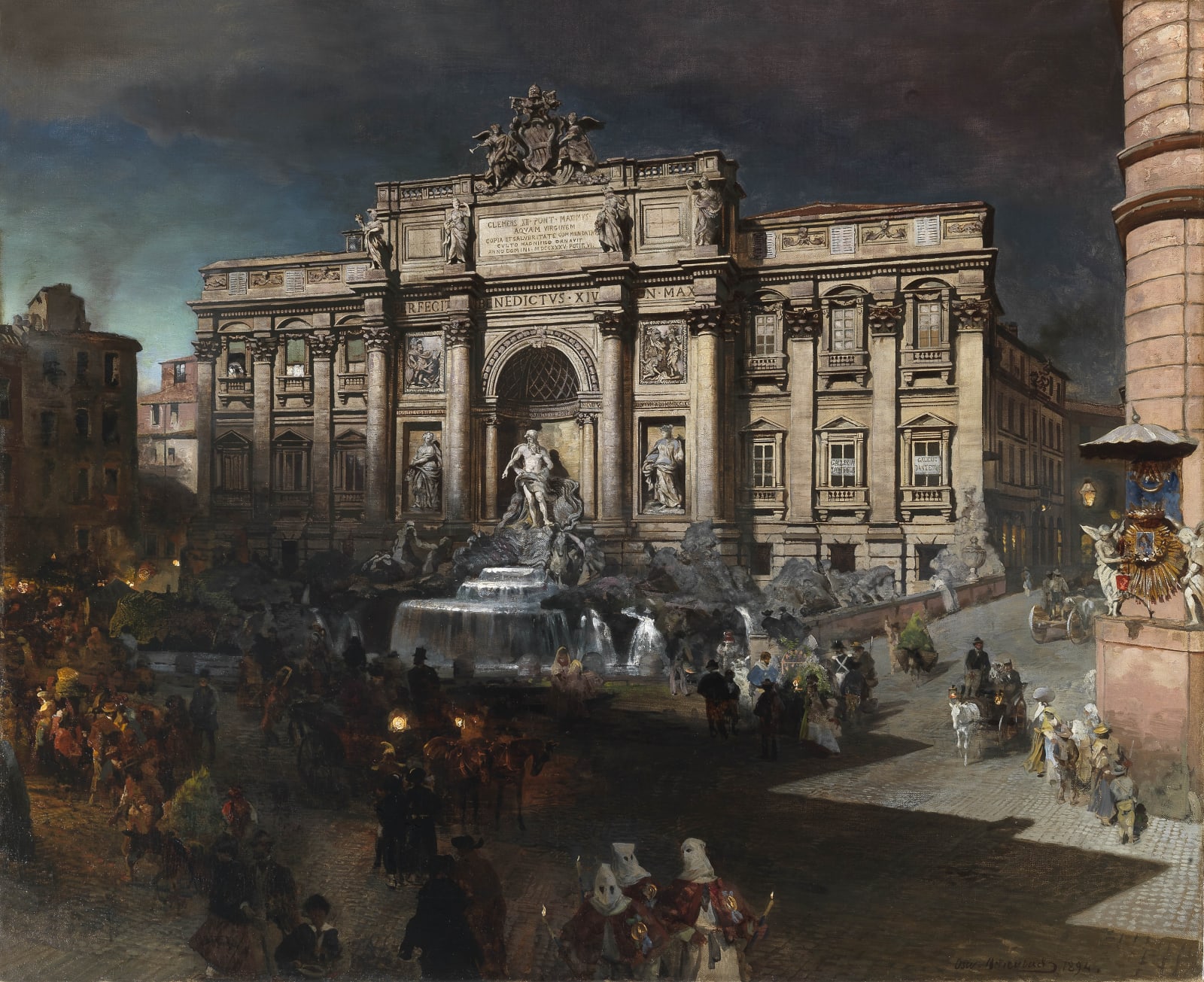Oswald ACHENBACH
This unpublished painting represents a suggestive and eerie view of the Fontana di Trevi.
Designed and commenced in 1732 by Nicola Salvi, who had won the contest induced by Pope Clemens XII, who inspired himself from the original project of Gian Lorenzo Bernini, the fountain was inaugurated in 1735, but completed by Giuseppe Pannini in 1762.
The façade of the Palazzo Poli serves as the stage setting for the fountain, which is served by the “Acqua Vergine”.
It is dedicated to the Majesty of the Sea with the travertine statue of “Neptune” (work of the sculptor Pietro Bracci), standing on the seashell-shaped chariot that is drawn by seahorses and driven by tritons, and surrounded by the statues of ‘Abundance’ and ‘Health’ on its sides.
At the center of the composition, an elaborate waterfall flows down into a large pool, while on its sides two naturalistic rocailles enclose the composition.
The point of view chosen by Achenbach to depict the scene, is the churchyard of the church of Santi Vincenzo e Anastasio, located on the northern angle of the square.
In the foreground, on the corner of the building, it is possible to see the famous sacred shrine of the Madonna dell’Archetto, an image which is very dear to the Romans, as a very curios miracle happened there in the second half of the XVIIIth century.
Spectacular and suggestive is the temporal setting in which the German artist depicts the fountain and the square, whom in other of his works also chooses the night light to boost the tendency of the light contrasts: the façade of the Palazzo Poli is in fact illuminated by the white light of the moon. The square is animated by various figures, some of which are carrying lit torches, while an elegant chariot drawn by two horses is stationed in front of the fountain with a tourist admiring the stunning beauty of the fountain.
An interesting detail is the inscription on the two far right windows of the palace: ‘Galleria Dantesca’ (Galerie Dantesque), a renowned gallery of the time where seven large paintings by Filippo Bigioli (six meters by four) with a subject from ‘Dante’s Divina Commedia’ were exposed.
JOIN OUR MAILING LIST
Subscribe to our mailing list in order to receive news on new acquisitions, exhibitions, special previews and more!
* denotes required fields
We will process the personal data you have supplied to communicate with you in accordance with our Privacy Policy. You can unsubscribe or change your preferences at any time by clicking the link in our emails.
